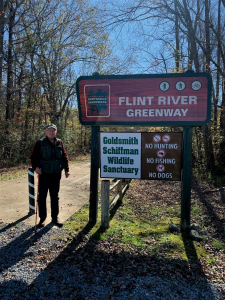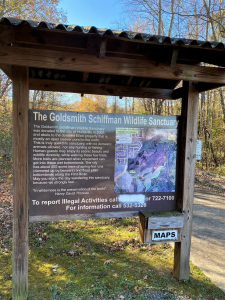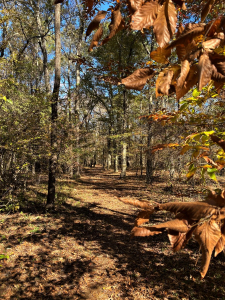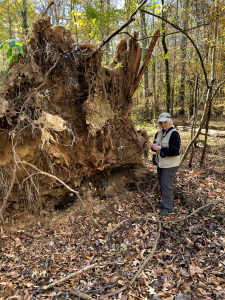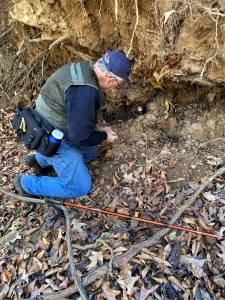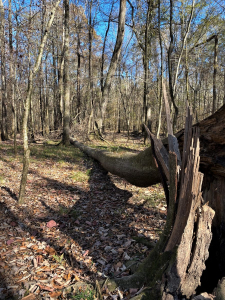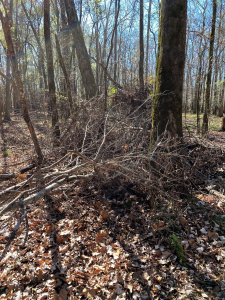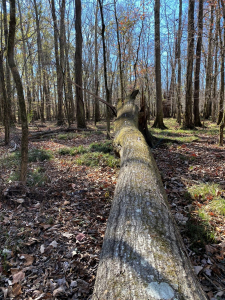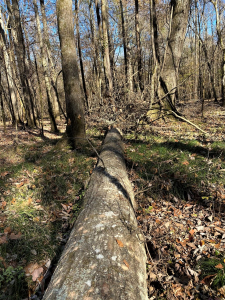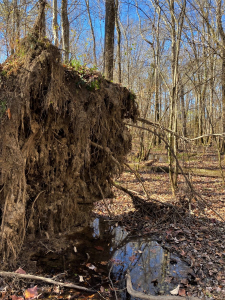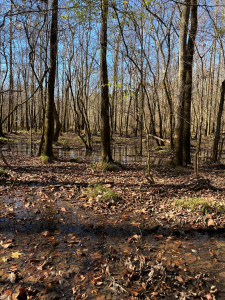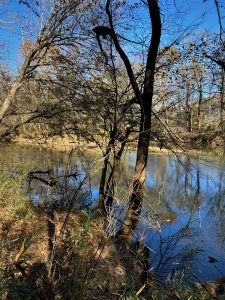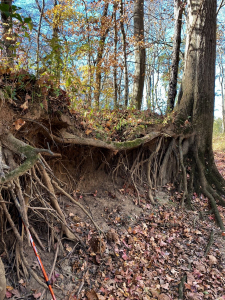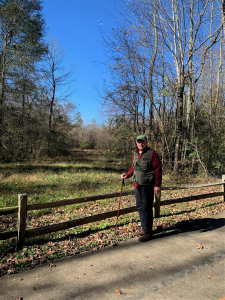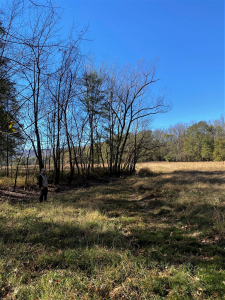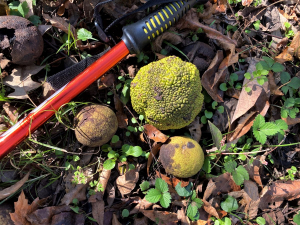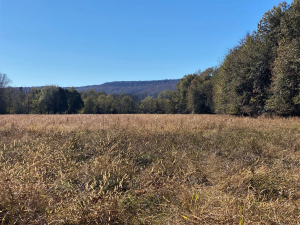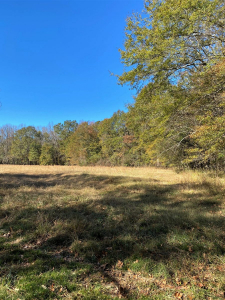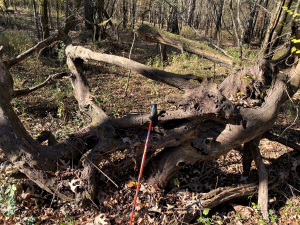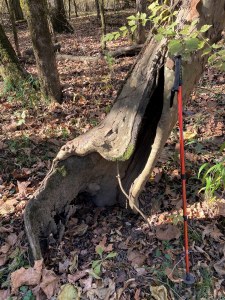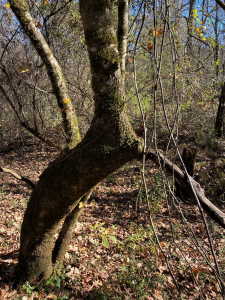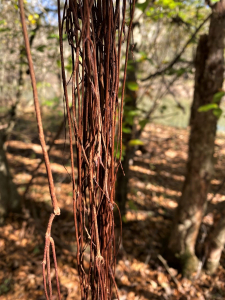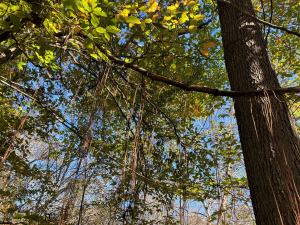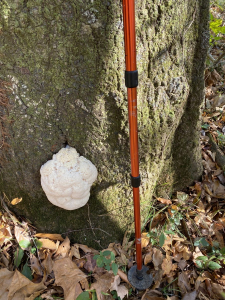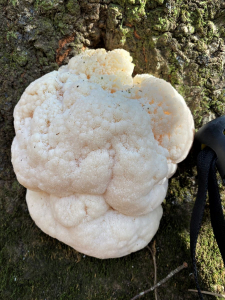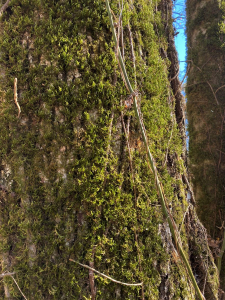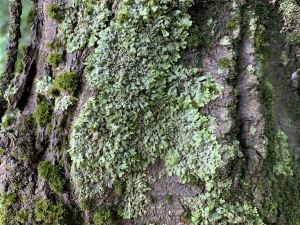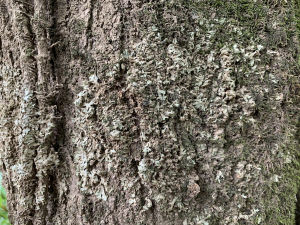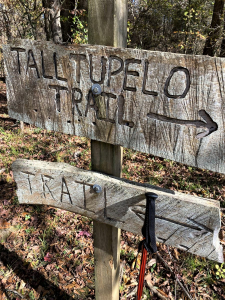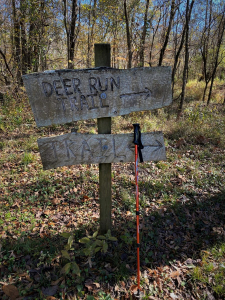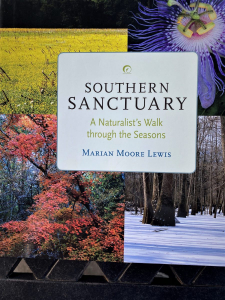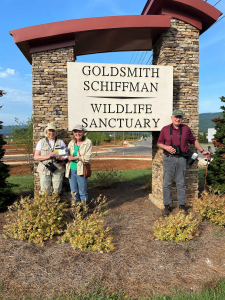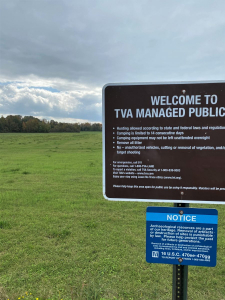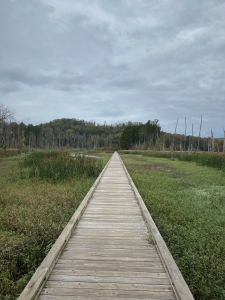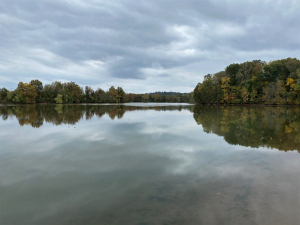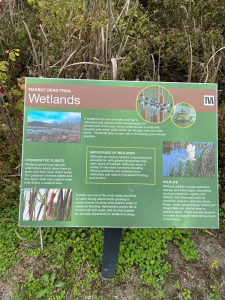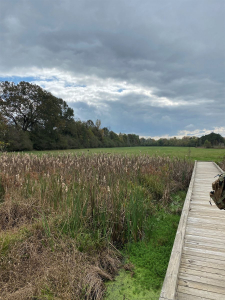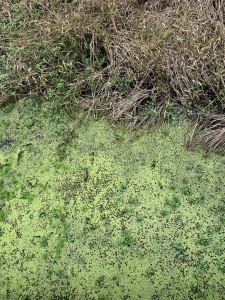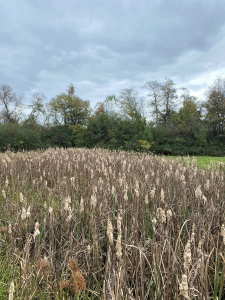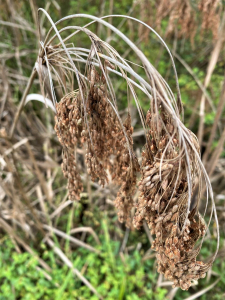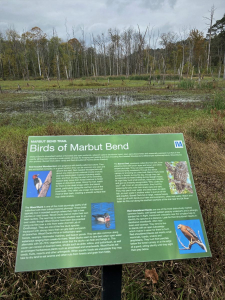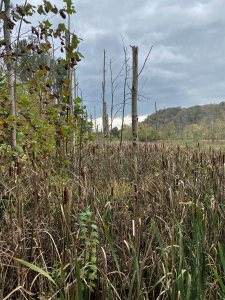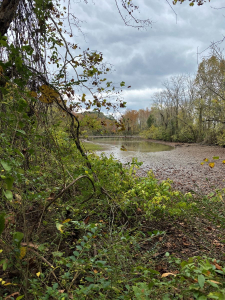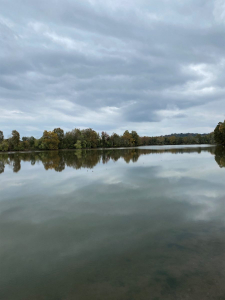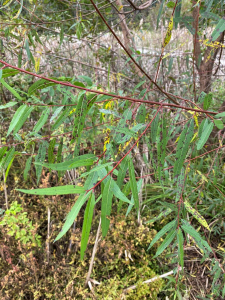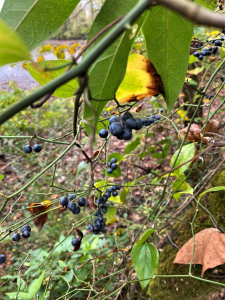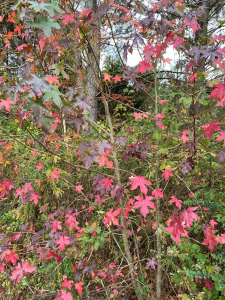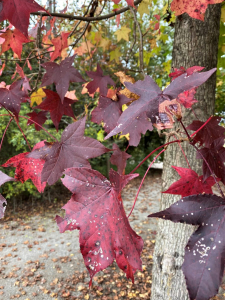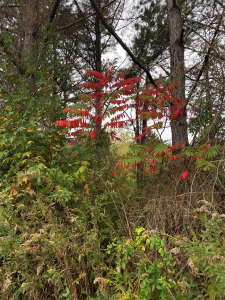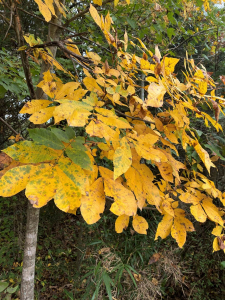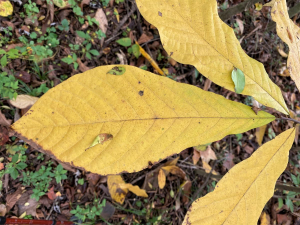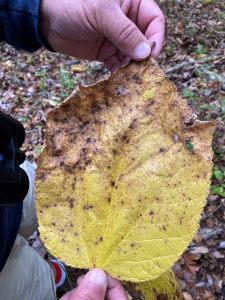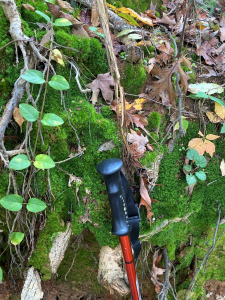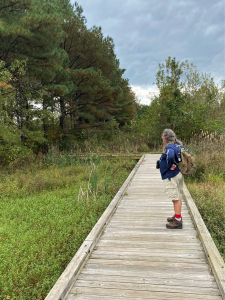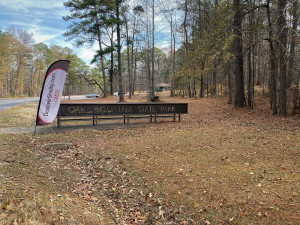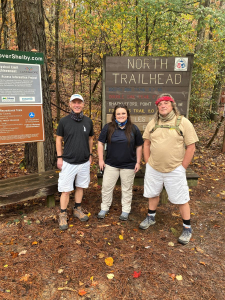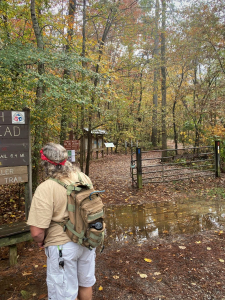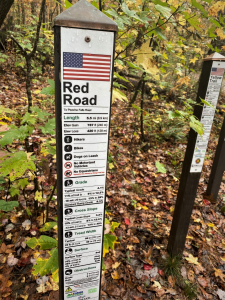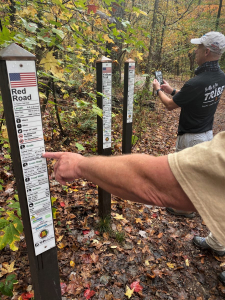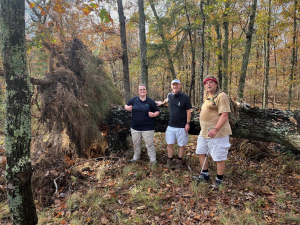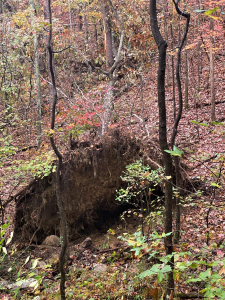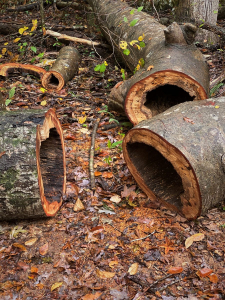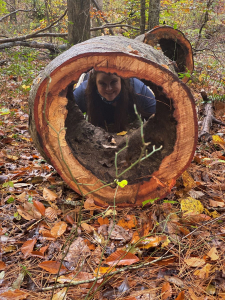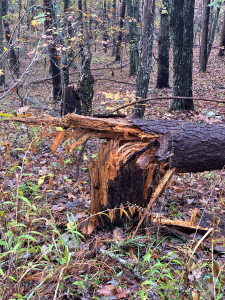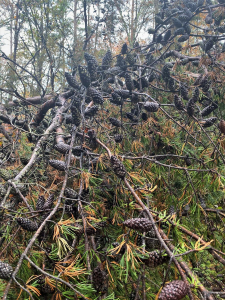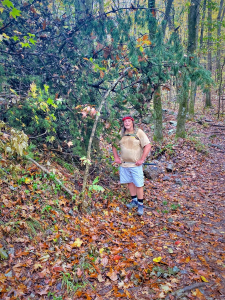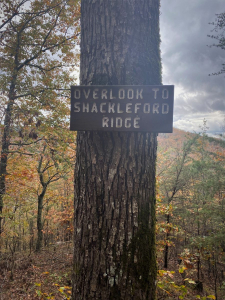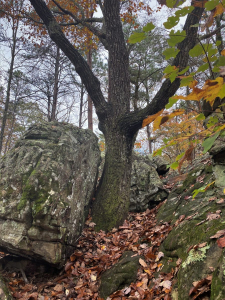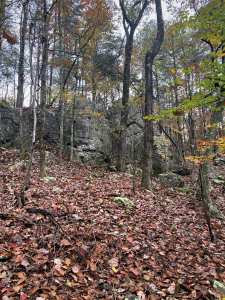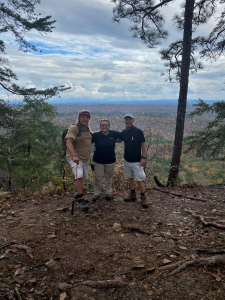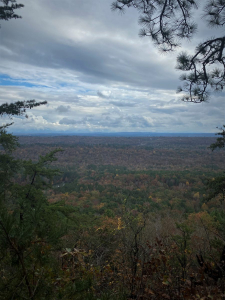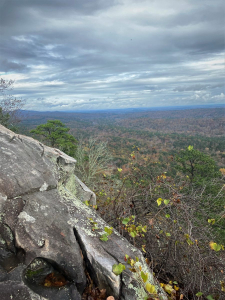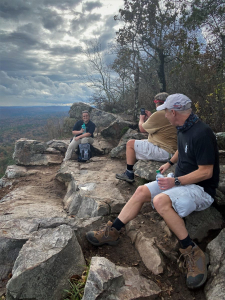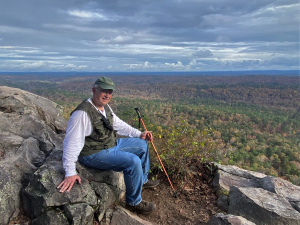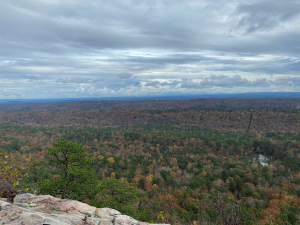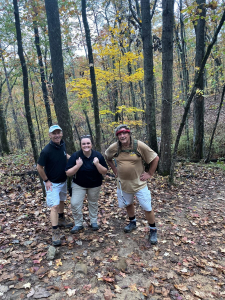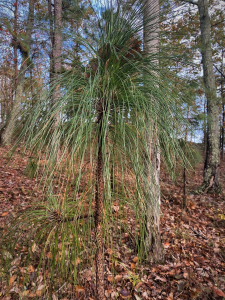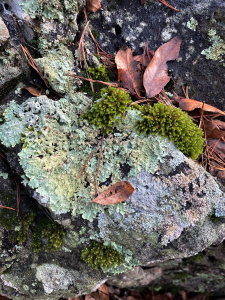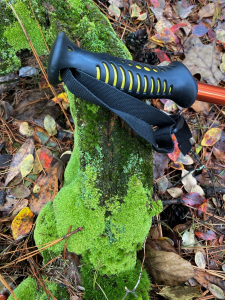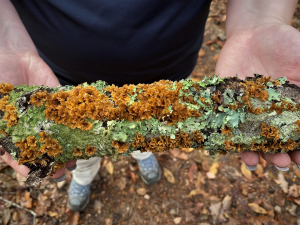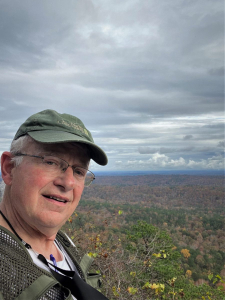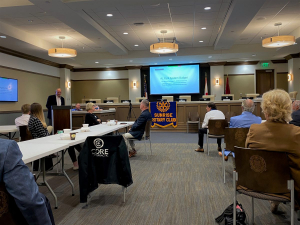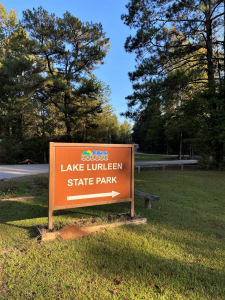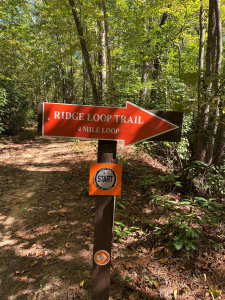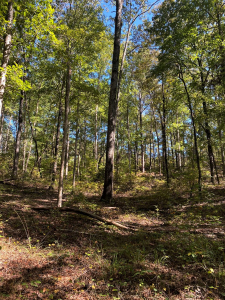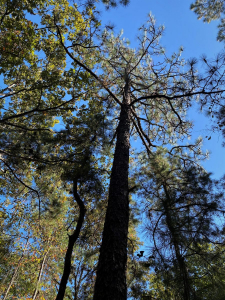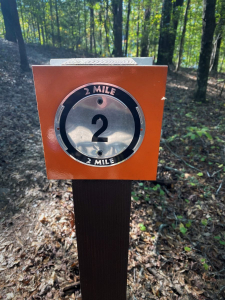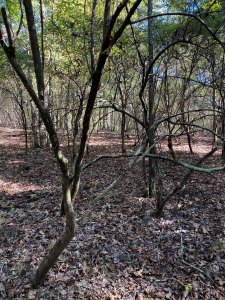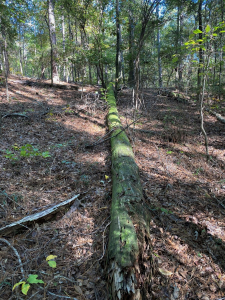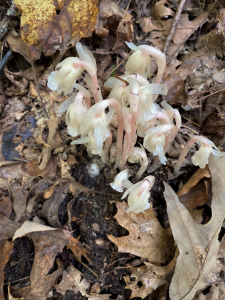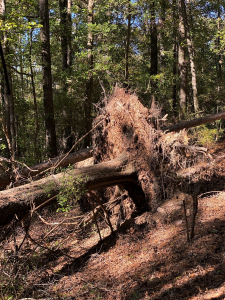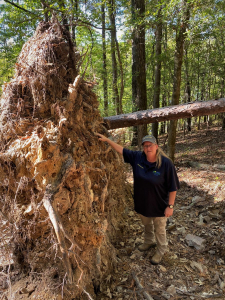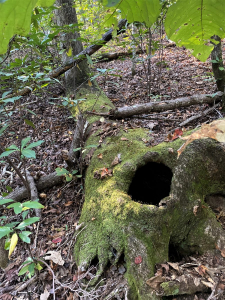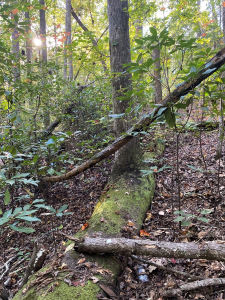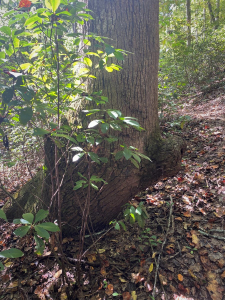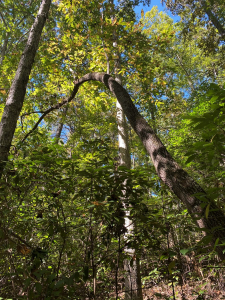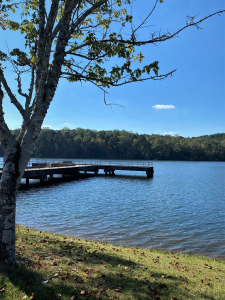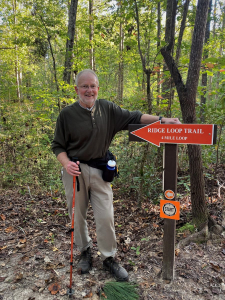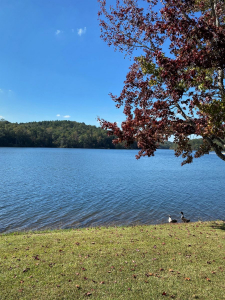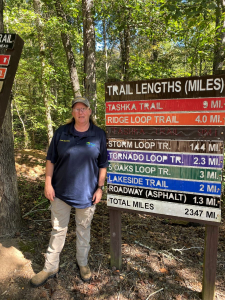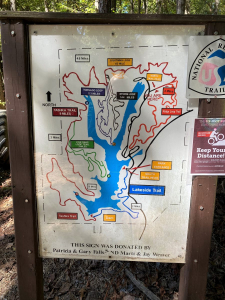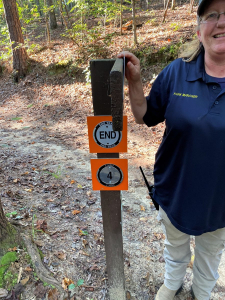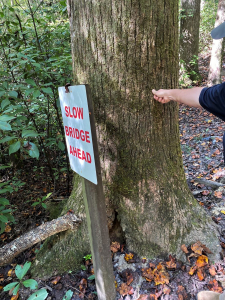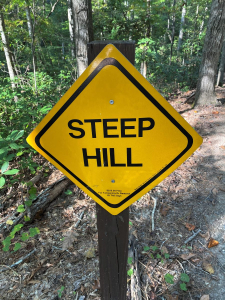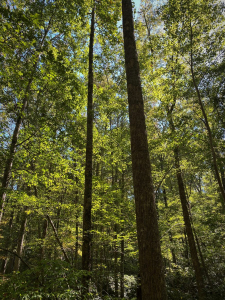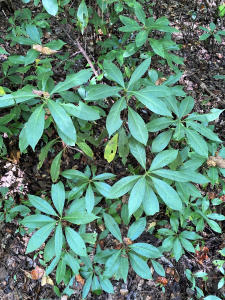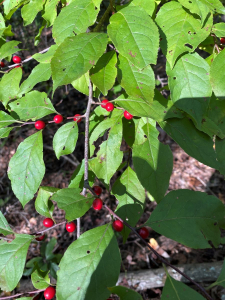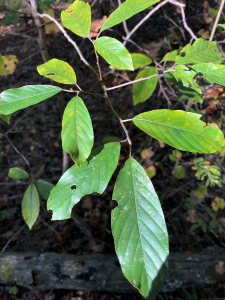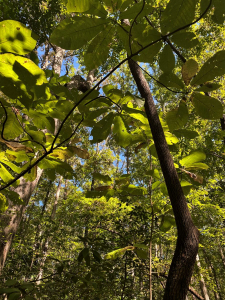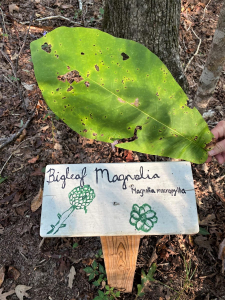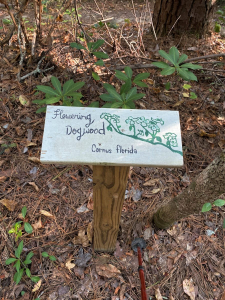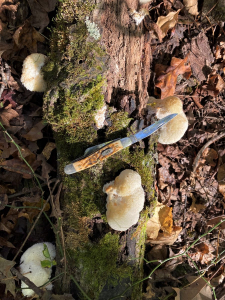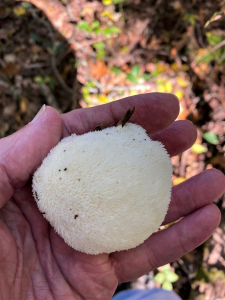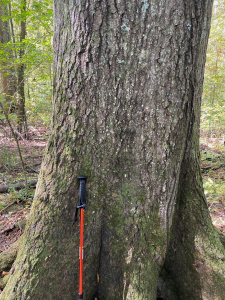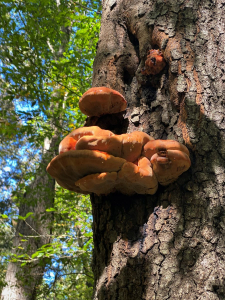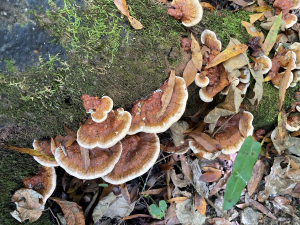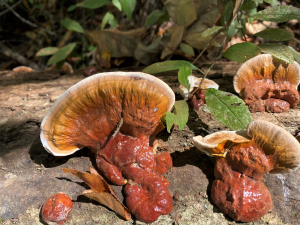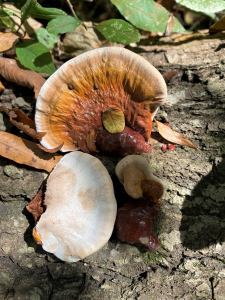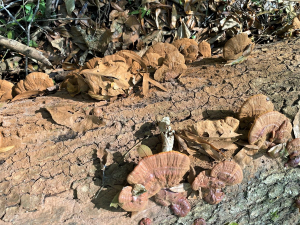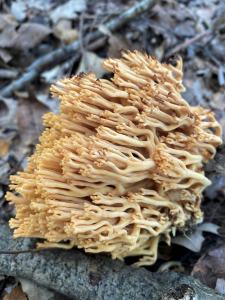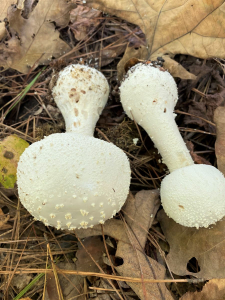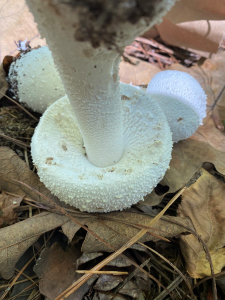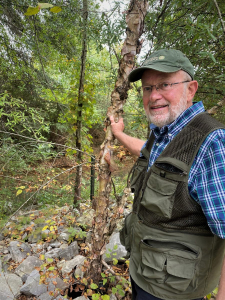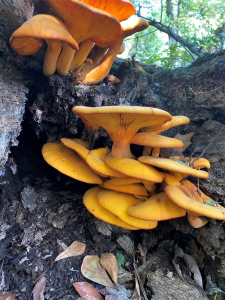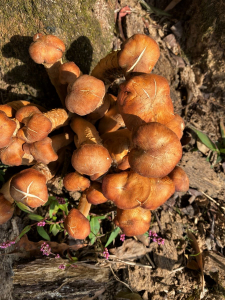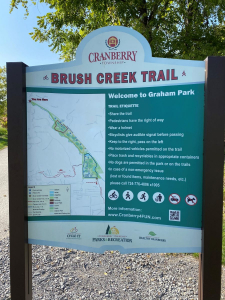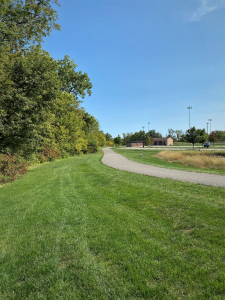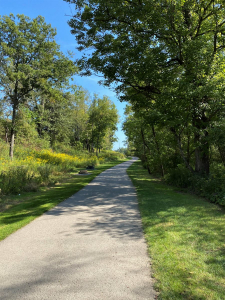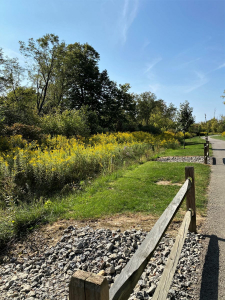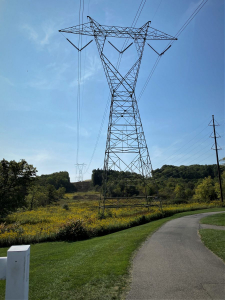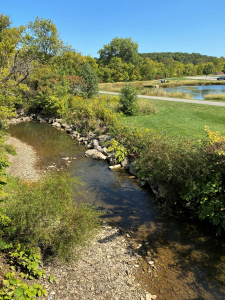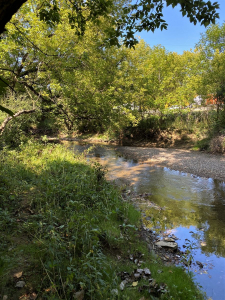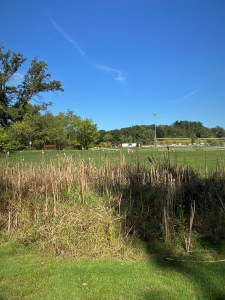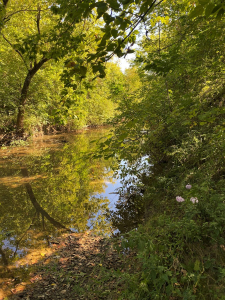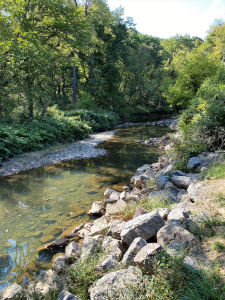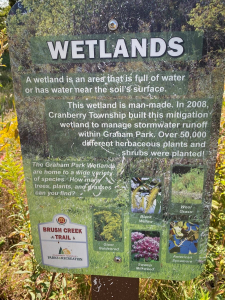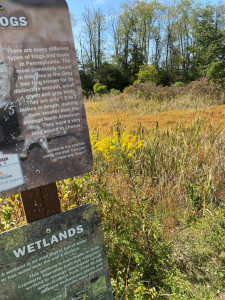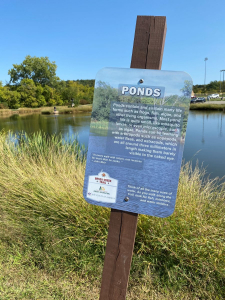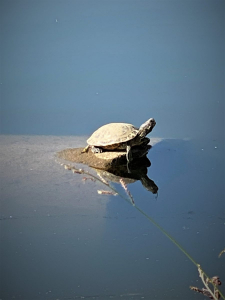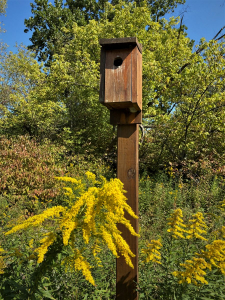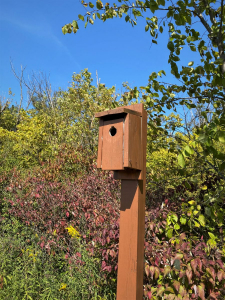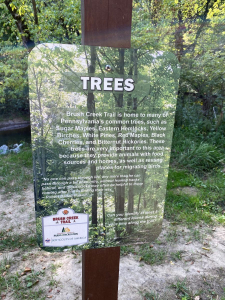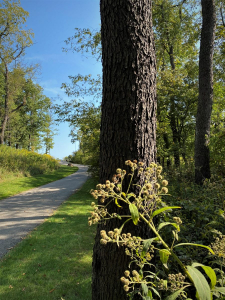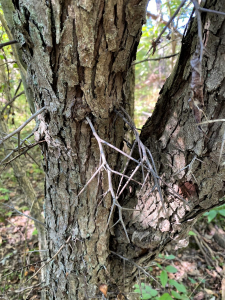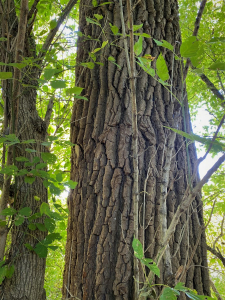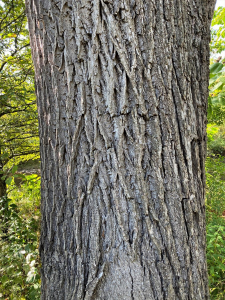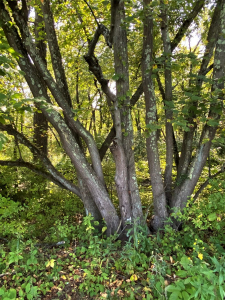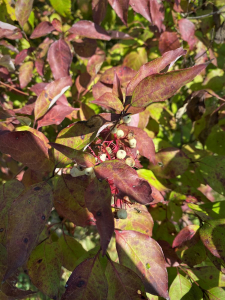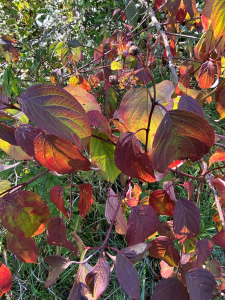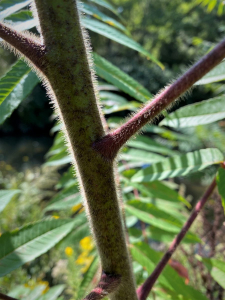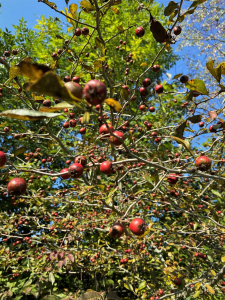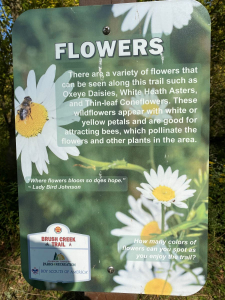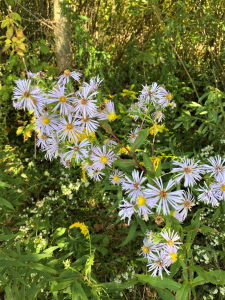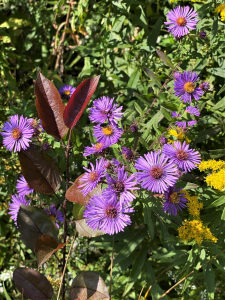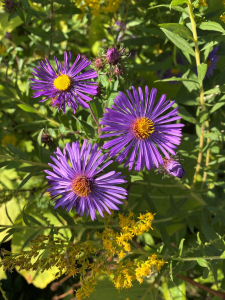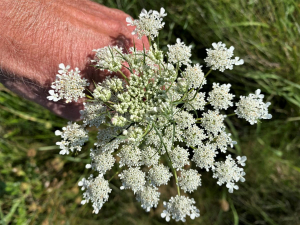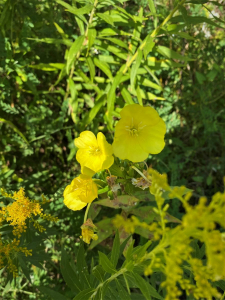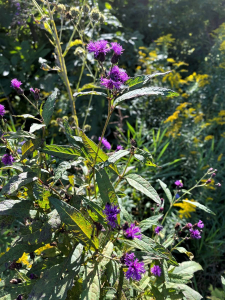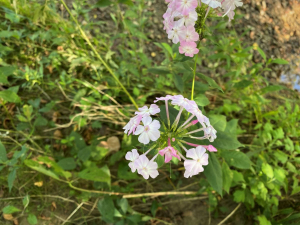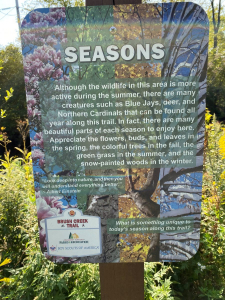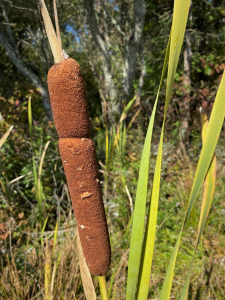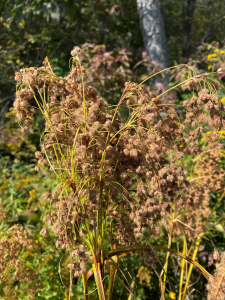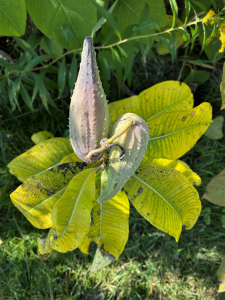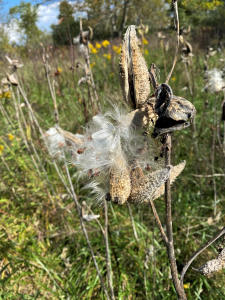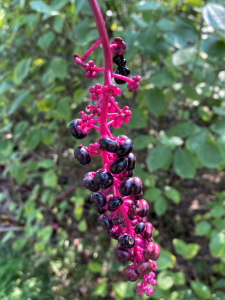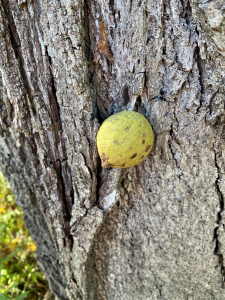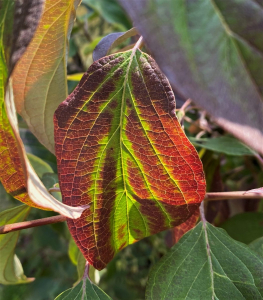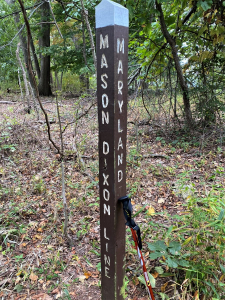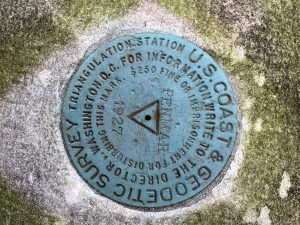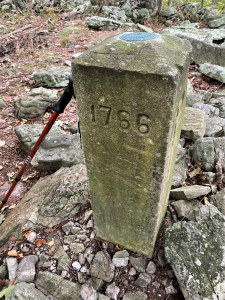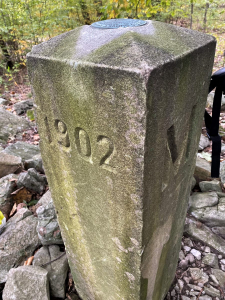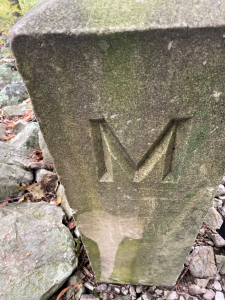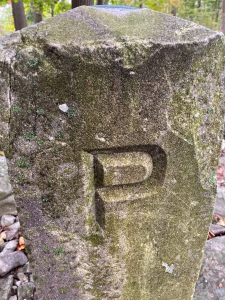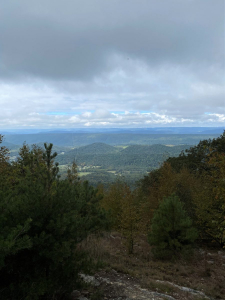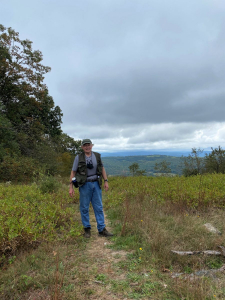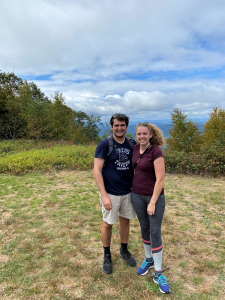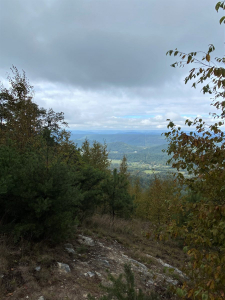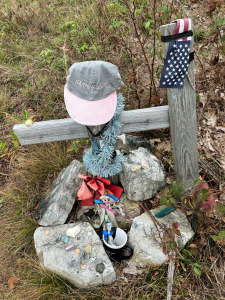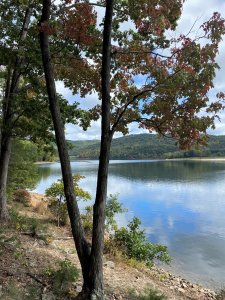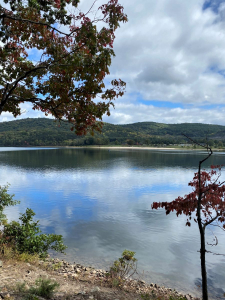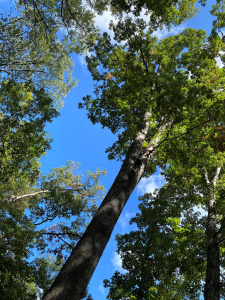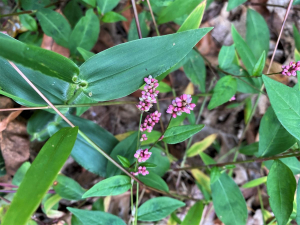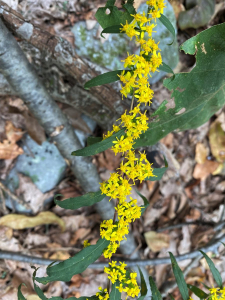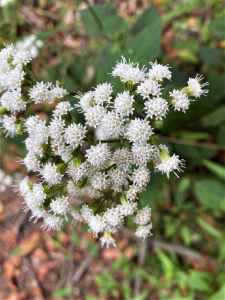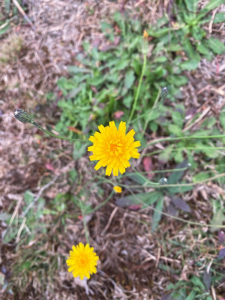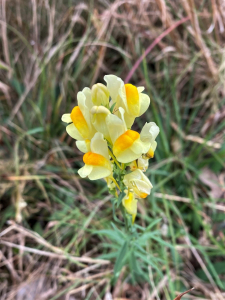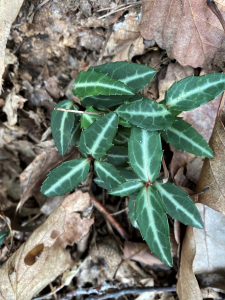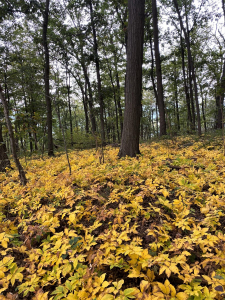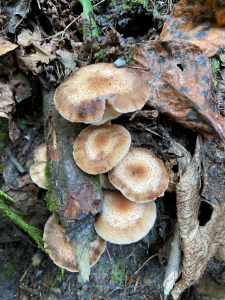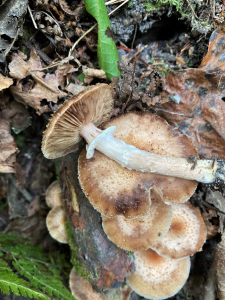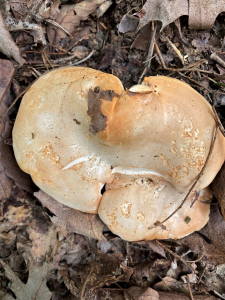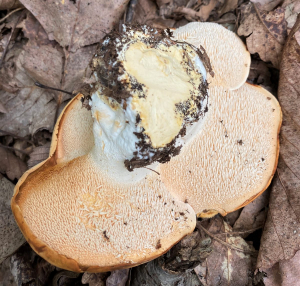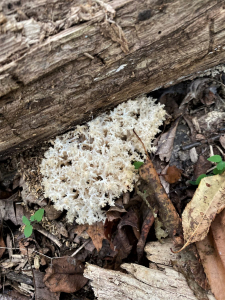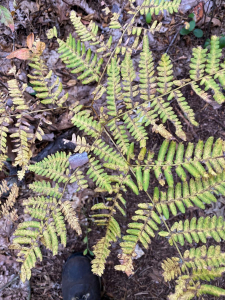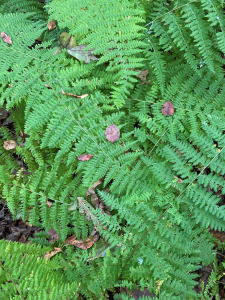Wheeler National Wildlife Refuge: Winter Ferns, Fungi, Mosses, and Lichens
I make it often to the eastern end of nearby Wheeler National Wildlife Refuge, occasionally issuing Blog Posts from my ventures, for example: https://stevejonesgbh.com/2020/08/19/august-riparian-forest-roaming-at-the-wheeler-national-wildlife-refuge/
I returned November 30 mid-morning on what for north Alabama was an unusually cold day following a wet (0.91″) overnight cold frontal passage. During my hike, a strong northwesterly breeze brought spits of sleet from time to time. Later that evening after I had returned home the sleet transitioned to snow flurries. That’s a big deal for us!
As is often the case for my Refuge excursions, I bushwhacked through a bottomland hardwood forest. I saw and photographed enough magic and wonder to yield two Blog Posts. I focus this first one on the fungi and non-flowering plants I encountered.
Bottomland Hardwood Forest
But first, a broad introduction to the bottomland hardwood forest. These are rich sites, supporting high canopies of mixed species, including poplar, diverse oaks, hickories, sweetgum, elm, beech, and others. Although I still have not purchased an instrument to measure tree height, I did find a recently downed oak that I stepped off at 112 feet. Tree height (at an indexed base age) is the best indicator of site quality in closed forests. I conducted my doctoral research on estimating site quality in the Allegheny Hardwood forests of SW NY and NW PA. I’m partial to deciduous forests…and consider these Tennessee River bottomland stands particularly impressive and inspiring. Before I shift to the associated fungi and non-flowering plants, I offer these representative photos of the stands I explored November 30.
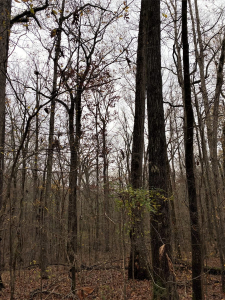
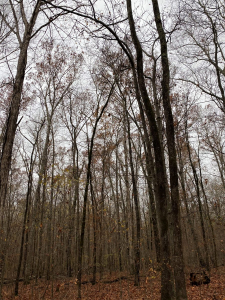
Revealing another bias, this one seasonal, I so welcome the dormant season with cooler temperatures, no ticks, red bugs, or mosquitoes, no obscuring foliage, desiccated ground cover, and unobstructed views deep into the surrounding forest.
Fungi
Best of all, relevant to this Post, fungi are visible, even at distance. I can spot them and go to them, rather than awaiting them to appear as I proceed through the sometimes dense undergrowth during the growing season. However, the easier passage through the forest does not magically sharpen my ability to identify mushrooms. I’m still climbing a very steep learning curve. I will offer tentative identification on many based upon my iNaturalist iPhone App crutch, but even these without great confidence.
Both of these, I believe are species of Trametes, a common hardwood forest decay fungus. Because this forest is 70-90 years old, some overstory trees are fading from the stand, dying in place, losing large branches, uprooting, and otherwise crashing to the ground. Dead and down woody debris is within sight nearby wherever I stopped to observe my surroundings. As I’ve often observed, death is a constant participant in the life of our forests.
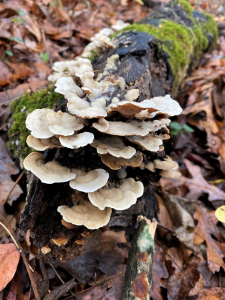
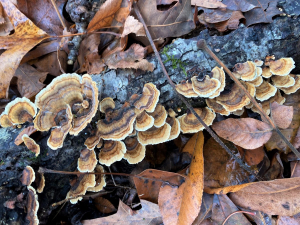
There is no reason for me to introduce the following images by describing my uncertainty. Instead, I will simply say, for example, here is smoky polypore (Bjerkandera adjusta). Accept, unless I indicate otherwise, that implicit in my statement is “at least that is what I think this species is or may be.” From iNaturalist, “Bjerkandera adjusta, commonly known as the smoky polypore or smoky bracket, is a species of fungus in the family Meruliaceae. It is a plant pathogen that causes white rot in live trees, but most commonly appears on dead wood. It was first described scientifically as Boletus adustus by Carl Ludwig Willdenow in 1787.”
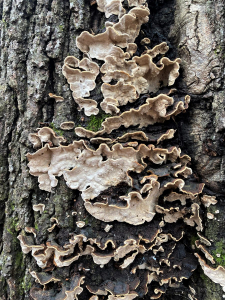
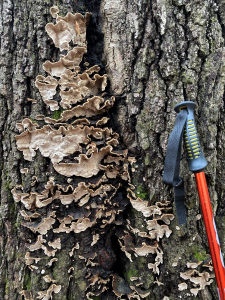
Below is a species of Trametes, very common in our Alabama hardwood forests. Life and death and life and death… the cycle is continuous. Life never outruns death. Death, in turn, brings life. Perhaps if I were once again a young forest scientist I would strive to find answers to my questions about life and death in a typical Tennessee River bottomland hardwood forest:
- Total biomass per acre
- Living and dead
- Tree, shrub, herbaceous
- Animals from mega-fauna to micro-organisms
- Above ground and below ground
- Plant, animal, and fungi kingdoms
- Annual carbon turnover
- My list is long
Wood decay fungi are major players in this cycle of living and dying. And Trametes is not an insignificant character.

Violet-toothed polypore (Trichaptum biforme) is a multi-story inhabitant of this standing dead white oak. Wikipedia, I find, often provides a succinct description: a species of poroid fungus in the order Hymenochaetales. It is a saprobe that decomposes hardwood stumps and logs. It is inedible. The tree, however, is not inedible — the fungi find it quite palatable! The tree will stand until its ever-weakening wood crosses a threshold where physics prevail in form of gravity, wind, ice, or lateral forces to bring the decaying wood back to its soil home, where it will give life-force to other living organisms.
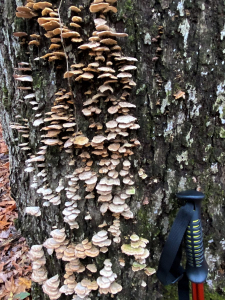
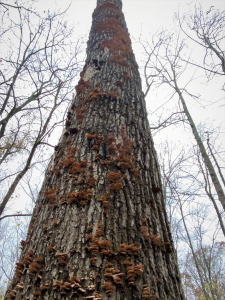
I am confident that the orange mushroom is crowded parchment (Stereum rameale), another common wood decay fungus, in this case sharing a downed branch with foliose and bearded lichen, a rich community…a natural work of art.
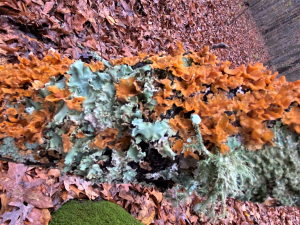
The corticioid fungi are a group of Basidiomycete fungi. Wikipedia offered some description of this group, paraphrased as: This group typically have effused, smooth fruiting bodies that are formed on the undersides of dead tree trunks or branches. They are sometimes colloquially called crust or patch fungi. This one was a bit soft and spongy to the touch. It clearly occupied a dead and down branch, and was not growing on the underside of a dead tree branch. I viewed this fungus as quite unusual. In fact, I’m not sure I’ve previously encountered it in my recent, more-mushroom-enlightened woods ramblings. So unusual that I imagined identification being easy! My iNaturalist could only observe, “We’re not confident enough to make a recommendation, but here are our top 10 suggestions.” None of them resembled my specimen. A 2021 New Year’s Resolution — spend some time in the forest with someone who knows local mycology far better than I!
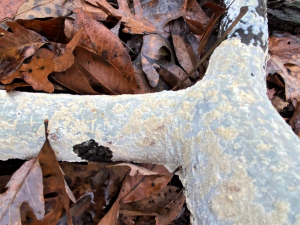
Another species of which I am somewhat certain, cracked cap polypore (Phellinus robiniae), is a fungus of the family of Hymenochaetaceae. The fungus primarily infests black locusts, aided by openings caused by Megacyllene robiniae infestation, but also grows on various other trees such as Carya (hickory) and oak (Wikipedia). Although I find this species growing abundantly on dead black locust (Robinia pseudoacacia), this individual is on an oak.

This one, too, is quite distinctive, Ganoderma sessile. It’s shiny lacquered-looking upper surface calls out to the passer-by, particularly vivid before, in this case, dulled by deep tannish spores from neighbors. The literature attributes medicinal value to this abundant wood decaying polypore.
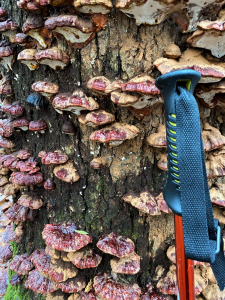
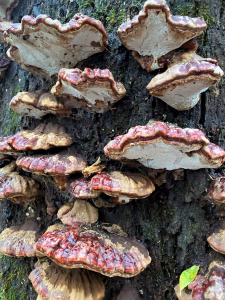
I am learning, slowly and surely… and pledge to even greater effort in 2021!
Lichens
Repeating my parchment mushroom photo from above, I give you a foliose lichen, and in the lower left a tuft of bearded lichen. As with the fungi, I need to learn more about lichens, a common resident in our southern forests. The US Forest Service offers one of the better descriptions I’ve encountered:
There are approximately 3,600 species of lichens in North America and those are just the ones we know about! New discoveries are being made every year. Lichens are found all across North America and all over the world. They are found in a vast diversity of habitats and climates, from the Sonoran desert on the Coronado National Forest, to the alpine tundra of Alaskan mountains on the Chugach National Forest, and in the tropical rainforests of the El Yunque National Forest in Puerto Rico.
Have you ever seen a lichen and knew that it was a lichen? Not many people know what lichens are, and who would? They seem as though they are from another planet! Lichens are bizarre organisms and no two are alike.
Lichens are a complex life form that is a symbiotic partnership of two separate organisms, a fungus and an alga. The dominant partner is the fungus, which gives the lichen the majority of its characteristics, from its thallus shape to its fruiting bodies. The alga can be either a green alga or a blue-green alga, otherwise known as cyanobacteria. Many lichens will have both types of algae.
In North America alone, 3,600 known species! There will never be a paucity of things I do not know.
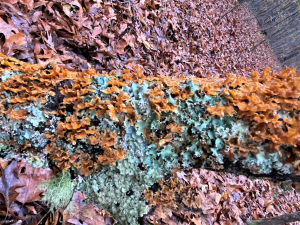
This bushy beard lichen is a member of the Usnea genus. I will attempt no further delineation, but surely a delightful organism of uncommon utility, beauty, and function.
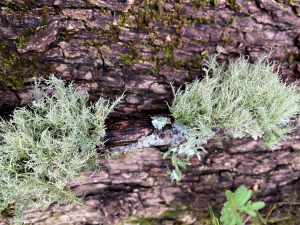
Mosses and Ferns
From family Neckeraceae iNaturalist: “We’re pretty sure this is in the family N…” — Some compelling names among the top ten species: Tree-skirt moss; seductive entodon moss; dendroalsia moss; American tree moss. American tree moss has a nice ring to it.
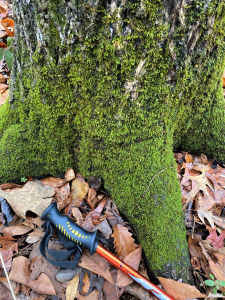
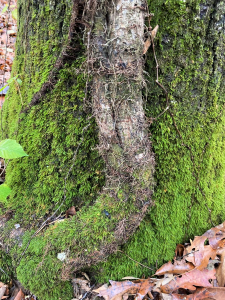
Another New Year’s Resolution: spend some time in the forest with someone who knows local bryology far better than I!
I feel confident identifying this moss by genus. From the online Britannica: Hair-cap moss, also called pigeon wheat, any of the plants of the genus Polytrichum (subclass Bryidae) with 39–100 species; it often forms large mats in peat bogs, old fields, and areas with high soil acidity. About 10 species are found in North America. Hair cap moss is soft, delicate, and spring-green.
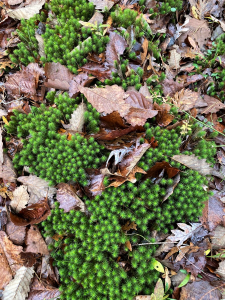
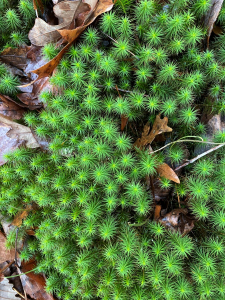
Here’s American tree moss with fully turgid resurrection fern (Pleopeltis polypodioides). I’ve included this fern occasionally in my Posts, with condition ranging from absolute desiccation to full flush in this case. For this tree- and rock-dwelling species, life is either feast or famine… and it copes quite well with the extremes.
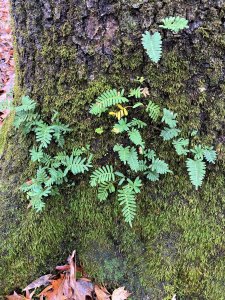
Without attempting to identify the mushrooms, I offer this rich community of at least two species of fungi, thick American tree moss, and resurrection fern. Diversity is a common theme in these forests.

Once again, resurrection fern in its glory.
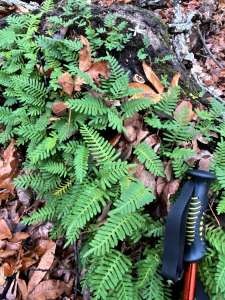
And our abundant Christmas fern (Polystichum acrostichoides), growing from Nova Scotia to Florida, and west to Minnesota and eastern Texas.
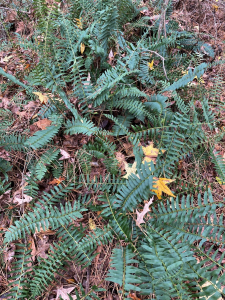
I love eastern hardwood forests, even as I am in love with our bottomland hardwood forests, where life is robust, diverse, and inspirational.
Thoughts and Reflections
I offer three observations from my late November trek through the early winter riparian forest:
- There’s pure magic in the southern riparian forest… no matter the season
- Trees alone do not make a forest
- I am embarrassingly ignorant of forest fungi, lichens, and mosses!
Inhale and absorb Nature’s elixir. May Nature Inspire, Inform, and Reward you!
Note: All blog post images created & photographed by Stephen B. Jones unless otherwise noted. Please circulate images with photo credit: “©2020 Steve Jones, Great Blue Heron LLC. All Rights Reserved.”
Another Note: If you came to this post via a Facebook posting or by an another route, please sign up now (no cost… no obligation) to receive my Blog Post email alerts: http://eepurl.com/cKLJdL
And a Third: I am available for Nature-Inspired Speaking, Writing, and Consulting — contact me at steve.jones.0524@gmail.com
Reminder of my Personal and Professional Purpose, Passion, and Cause
If only more of us viewed our precious environment through the filters I employ. If only my mission and vision could be multiplied untold orders of magnitude:
Mission: Employ writing and speaking to educate, inspire, and enable readers and listeners to understand, appreciate, and enjoy Nature… and accept and practice Earth Stewardship.
Vision:
- People of all ages will pay greater attention to and engage more regularly with Nature… and will accept and practice informed and responsible Earth Stewardship.
- They will see their relationship to our natural world with new eyes… and will understand more clearly their Earth home.
Tagline/Motto: Steve (Great Blue Heron) encourages and seeks a better tomorrow through Nature-Inspired Living!
Steve’s Three Books
I wrote my books Nature Based Leadership (2016), Nature-Inspired Learning and Leading (2017), and Weaned Seals and Snowy Summits: Stories of Passion for Place and Everyday Nature (2019; co-authored with Dr. Jennifer Wilhoit) to encourage all citizens to recognize and appreciate that every lesson for living, learning, serving, and leading is either written indelibly in or is powerfully inspired by Nature.
I began writing books and Posts for several reasons:
- I love hiking and exploring in Nature
- I see images I want to (and do) capture with my trusty iPhone camera
- I enjoy explaining those images — an educator at heart
- I don’t play golf!
- I actually do love writing — it’s the hobby I never needed when my career consumed me
- Judy suggested my writing is in large measure my legacy to our two kids, our five grand kids, and all the unborn generations beyond
- And finally, perhaps my books and Blogs could reach beyond family and touch a few other lives… sow some seeds for the future


All three of my books (Nature Based Leadership; Nature-Inspired Learning and Leading; Weaned Seals and Snowy Summits) present compilations of personal experiences expressing my (and co-author Dr. Wilhoit for Weaned Seals and Snowy Summits) deep passion for Nature. All three books offer observations and reflections on my relationship to the natural world… and the broader implications for society. Order any and all from your local indie bookstore, or find them on IndieBound or other online sources such as Amazon and LifeRich.

